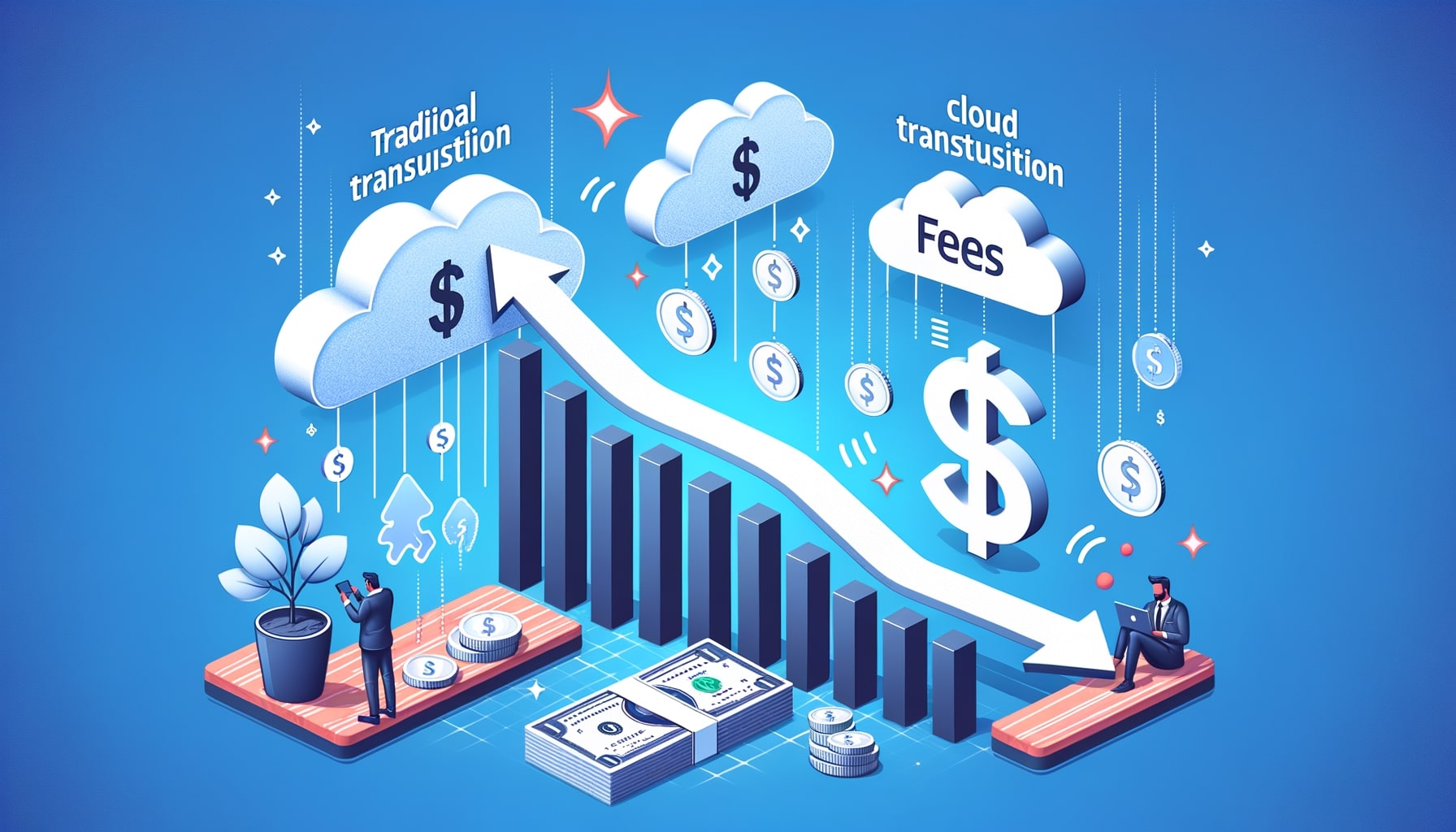Cross-Platform Compatibility of Cloud Payment Solutions
In today’s digital age, cloud payment solutions have revolutionized the way businesses handle transactions. These solutions offer convenience, security, and efficiency, making them increasingly popular among merchants and consumers alike. However, one crucial aspect that determines the success of cloud payment solutions is cross-platform compatibility. In this comprehensive guide, we will explore the concept of cross-platform compatibility in cloud payment solutions, its importance, benefits, and best practices for achieving it.
Understanding Cross-Platform Compatibility in Cloud Payment Solutions
Cross-platform compatibility is a critical factor in the selection and deployment of cloud payment solutions. As businesses aim to provide seamless payment experiences across various devices and operating systems, understanding the intricacies of cross-platform compatibility becomes essential. Let’s explores the key aspects of cross-platform compatibility in cloud payment solutions, addressing challenges, strategies for integration, and the benefits it brings to businesses and consumers.
What is Cross-Platform Compatibility?

Cross-platform compatibility refers to the ability of a software or application to function seamlessly across different operating systems, devices, and platforms. In the context of cloud payment solutions, it means that the payment system should work flawlessly on various devices such as smartphones, tablets, laptops, and desktop computers, regardless of the operating system they are running.
The Importance of Cross-Platform Compatibility in Cloud Payment Solutions
Cross-platform compatibility is crucial for cloud payment solutions as it ensures a consistent user experience across different devices and platforms. With the increasing popularity of mobile devices, customers expect to be able to make payments using their preferred device, whether it’s a smartphone or a laptop. By providing cross-platform compatibility, businesses can cater to a wider audience and enhance customer satisfaction.
Benefits of Cross-Platform Compatibility in Cloud Payment Solutions
Cross-platform compatibility in cloud payment solutions is a pivotal feature that enables businesses to reach a wider audience, streamline operations, and enhance customer satisfaction. By ensuring that payment systems work seamlessly across all platforms, businesses can leverage significant benefits. Here’s a breakdown of the key benefits in a step-by-step format:
- Expanded Customer Reach: By offering cross-platform compatibility, businesses can reach a larger customer base as they can cater to users of different devices and operating systems. This can lead to increased sales and revenue opportunities.
- Enhanced User Experience: Cross-platform compatibility ensures a seamless and consistent user experience across devices. Customers can make payments without any disruptions or compatibility issues, leading to higher customer satisfaction and loyalty.
- Increased Flexibility: With cross-platform compatibility, businesses can adapt to changing technology trends and customer preferences. They can easily integrate new devices and platforms into their payment system, providing customers with more options and convenience.
- Improved Efficiency: Cloud payment solutions with cross-platform compatibility streamline the payment process, making it faster and more efficient. This can reduce transaction times and improve overall operational efficiency for businesses.
Exploring Cloud Payment Solutions

Cloud payment solutions are revolutionizing the way businesses handle transactions, providing a secure, scalable, and efficient means of managing payments across various platforms. As the reliance on digital transactions grows, it’s crucial for businesses to understand the benefits, challenges, and key considerations associated with implementing these solutions.
What are Cloud Payment Solutions?
Cloud payment solutions, also known as cloud-based payment systems, are software applications that enable businesses to accept and process payments securely over the internet. These solutions eliminate the need for physical payment terminals and allow businesses to accept payments from various sources, including credit cards, mobile wallets, and online banking.
Advantages of Cloud Payment Solutions
Cloud payment solutions are becoming increasingly popular among businesses of all sizes due to their ability to streamline payment processes and enhance operational efficiencies. These solutions leverage the power of cloud computing to offer secure, reliable, and flexible payment options. Here’s a breakdown of the key advantages of cloud payment solutions, presented in a step-by-step format:
- Cost Savings: Cloud payment solutions eliminate the need for expensive hardware and infrastructure, reducing upfront costs for businesses. They also offer flexible pricing models, allowing businesses to pay only for the services they use.
- Security: Cloud payment solutions employ advanced encryption and security measures to protect sensitive customer data. They comply with industry standards and regulations, ensuring secure transactions and reducing the risk of data breaches.
- Scalability: Cloud payment solutions can easily scale up or down based on business needs. Whether a business experiences a sudden surge in sales or expands to new locations, cloud-based systems can handle the increased transaction volume without disruptions.
- Integration: Cloud payment solutions can integrate with other business systems such as inventory management, customer relationship management (CRM), and accounting software. This integration streamlines operations and provides businesses with a holistic view of their financial data.
Challenges in Implementing Cloud Payment Solutions
While cloud payment solutions offer numerous advantages, there are also challenges associated with their implementation. Some of the common challenges include:
- Connectivity: Cloud payment solutions rely on internet connectivity to process transactions. In areas with poor or unreliable internet connections, businesses may face disruptions in their payment processing.
- Data Security: As cloud payment solutions involve the transmission and storage of sensitive customer data, businesses must ensure robust security measures are in place to protect against data breaches and unauthorized access.
- Compliance: Cloud payment solutions must comply with industry regulations and standards, such as the Payment Card Industry Data Security Standard (PCI DSS). Businesses need to ensure that their chosen solution meets these requirements to avoid penalties and legal issues.
Cross-Platform Compatibility in Cloud Payment Solutions
Cross-platform compatibility is a vital aspect of cloud payment solutions, enabling businesses to provide seamless payment experiences across various devices and operating systems. This feature not only ensures accessibility but also enhances user engagement and satisfaction by offering a consistent payment interface. Here’s a detailed exploration of cross-platform compatibility in cloud payment solutions, emphasizing its importance and impact.
How Cross-Platform Compatibility Works in Cloud Payment Solutions
Cross-platform compatibility in cloud payment solutions is achieved through the use of standardized protocols and technologies. Payment service providers (PSPs) and software developers ensure that their solutions are compatible with popular operating systems such as iOS, Android, Windows, and web browsers.
To achieve cross-platform compatibility, cloud payment solutions utilize application programming interfaces (APIs) that allow different software systems to communicate and exchange data. These APIs enable seamless integration between the payment solution and various devices and platforms, ensuring a consistent user experience.
Factors to Consider for Achieving Cross-Platform Compatibility
Achieving cross-platform compatibility in cloud payment solutions is essential for providing seamless and efficient payment experiences to customers across different devices and operating systems. This compatibility ensures that all users, regardless of their chosen platform, can access and use your payment system effectively. Here’s a step-by-step guide on the key factors to consider when aiming to achieve cross-platform:
- Operating System Compatibility: Businesses need to ensure that their chosen cloud payment solution supports the operating systems used by their target audience. This includes compatibility with iOS, Android, Windows, and other popular operating systems.
- Device Compatibility: Cloud payment solutions should be compatible with a wide range of devices, including smartphones, tablets, laptops, and desktop computers. This ensures that customers can make payments using their preferred device without any compatibility issues.
- Browser Compatibility: For web-based payment solutions, compatibility with different web browsers is essential. The solution should work seamlessly on popular browsers such as Google Chrome, Mozilla Firefox, Safari, and Microsoft Edge.
- User Interface Design: The user interface of the cloud payment solution should be intuitive and user-friendly across different devices and platforms. It should adapt to different screen sizes and resolutions, providing a consistent and visually appealing experience.
Best Practices for Ensuring Cross-Platform Compatibility
Ensuring cross-platform compatibility in cloud payment solutions is essential for businesses that aim to provide a seamless user experience across various devices and operating systems. By adopting specific best practices, organizations can ensure that their payment systems are accessible and functional for all users, regardless of their platform preference. Here’s a detailed step-by-step guide on the best practices for achieving cross-platform compatibility:
- Test on Multiple Devices and Platforms: Businesses should thoroughly test their cloud payment solution on various devices, operating systems, and web browsers to identify and resolve any compatibility issues. This includes testing on different screen sizes, resolutions, and input methods.
- Follow Design Guidelines: Adhering to design guidelines provided by operating system and platform developers ensures that the user interface of the payment solution is consistent with the native experience. This enhances usability and familiarity for users.
- Regular Updates and Maintenance: Cloud payment solutions should be regularly updated to ensure compatibility with the latest operating systems, devices, and browsers. This includes addressing any security vulnerabilities and bug fixes.
- Collaboration with Payment Service Providers: Working closely with payment service providers can help businesses ensure that their chosen solution is compatible with the payment methods and technologies supported by the provider. This collaboration can also provide insights into industry best practices and emerging trends.
Frequently Asked Questions
Q.1: What is the role of APIs in achieving cross-platform compatibility?
APIs play a crucial role in achieving cross-platform compatibility in cloud payment solutions. They enable different software systems to communicate and exchange data, allowing the payment solution to integrate seamlessly with various devices and platforms. APIs provide a standardized way for developers to access and utilize the functionalities of the payment solution, ensuring compatibility across different operating systems and devices.
Q.2: Can cloud payment solutions be compatible with both mobile and web platforms?
Yes, cloud payment solutions can be designed to be compatible with both mobile and web platforms. Mobile compatibility allows customers to make payments using their smartphones or tablets, while web compatibility enables payments through web browsers on laptops and desktop computers. By offering compatibility with both mobile and web platforms, businesses can cater to a wider audience and provide a seamless payment experience across devices.
Q.3: How does cross-platform compatibility impact user experience?
Cross-platform compatibility has a significant impact on user experience. When a cloud payment solution is compatible with different devices and platforms, users can make payments using their preferred device without any compatibility issues. This enhances convenience and satisfaction, leading to a positive user experience. In contrast, if a payment solution is not cross-platform compatible, users may encounter errors, glitches, or limitations, resulting in frustration and a negative user experience.
Q.4: Are there any security concerns related to cross-platform compatibility?
While cross-platform compatibility itself does not pose specific security concerns, businesses must ensure that their cloud payment solution is secure across all platforms. This includes implementing robust encryption, authentication, and authorization mechanisms to protect sensitive customer data. Additionally, businesses should regularly update their payment solution to address any security vulnerabilities and stay compliant with industry standards and regulations.
Q.5: What are the potential challenges in maintaining cross-platform compatibility?
Maintaining cross-platform compatibility can be challenging due to the rapid evolution of technology and the diversity of devices and platforms. New operating systems, devices, and browsers are constantly being introduced, requiring businesses to adapt their payment solutions accordingly. Additionally, changes in APIs, software development frameworks, and security protocols can also impact cross-platform compatibility. Regular testing, updates, and collaboration with payment service providers can help businesses overcome these challenges and ensure ongoing compatibility.
Conclusion
In conclusion, cross-platform compatibility is a crucial aspect of cloud payment solutions. It ensures a consistent user experience across different devices and platforms, expanding customer reach and enhancing satisfaction. By understanding the concept of cross-platform compatibility, its importance, benefits, and best practices for achieving it, businesses can optimize their cloud payment solutions and stay ahead in the competitive digital landscape.










